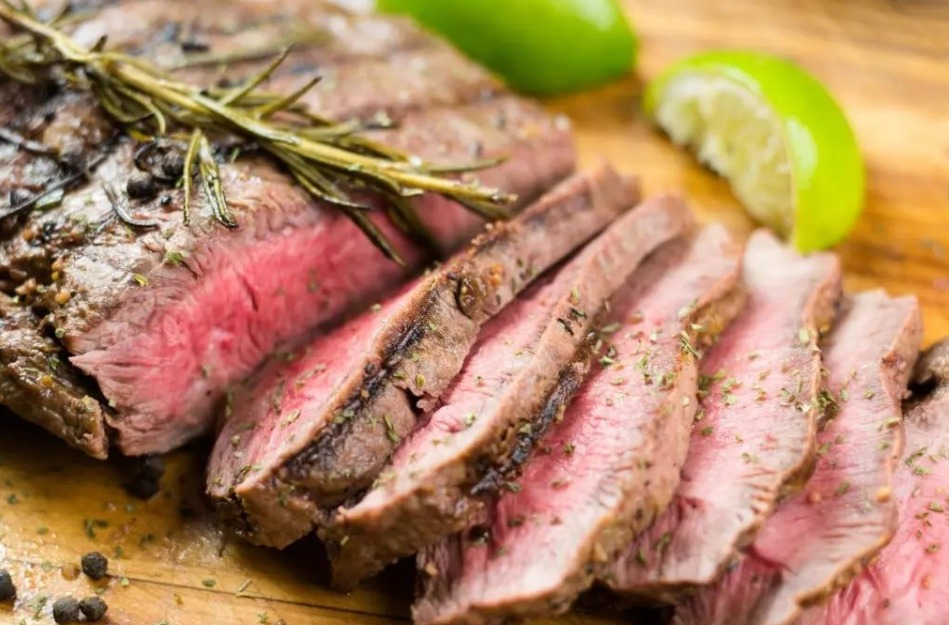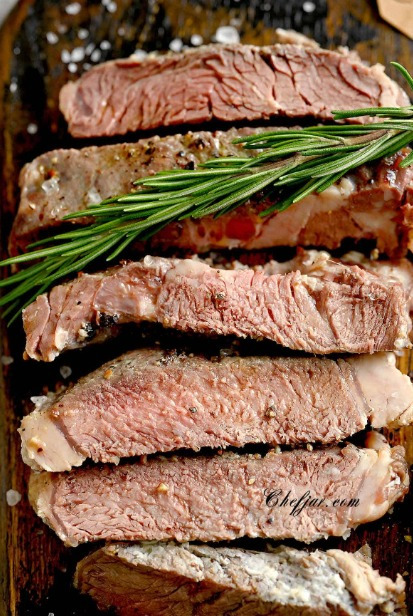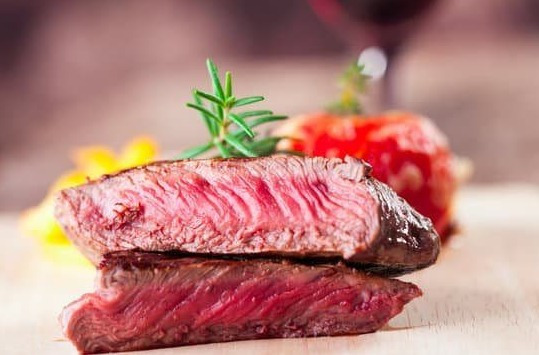The Ultimate Guide to Enjoying Favorite Food Milk Steak: A Culinary Adventure
Dive into the world of your favorite food milk steak with this comprehensive guide. Discover recipes, nutritional facts, and the unique history of this culinary delight.
Introduction to Milk Steak
Milk steak, a term that might perplex the uninitiated, is actually a dish with a unique preparation method that involves cooking or soaking steak in milk. This culinary curiosity has sparked discussions and debates among food enthusiasts and skeptics alike. But what exactly is milk steak, and how did it become a topic of interest?
What is Milk Steak?
Milk steak refers to a method of preparing steak that involves simmering or marinating the meat in milk. The process is believed to tenderize the steak, infusing it with a subtle sweetness and creating a texture that is different from traditional steak cooking methods. The milk is sometimes seasoned with spices or herbs, adding layers of flavor to the dish.

The Origin and Popularity
The concept of milk steak gained widespread attention from its mention in a popular television show, making it a cultural reference point. Its origins in mainstream culture are more comedic than culinary, but it has since inspired chefs and home cooks to explore its potential in the kitchen. The dish’s blend of humor and culinary experimentation has led to its growing popularity among adventurous eaters looking to try something new.
Favorite Food Milk Steak | The Culinary Adventure
How to Prepare Milk Steak
Preparing milk steak requires a blend of simple ingredients and a touch of culinary courage. The process may seem unconventional, but it’s a venture into a delightful fusion of flavors and textures.
Ingredients Needed
- A high-quality cut of steak (e.g., filet mignon, ribeye)
- Whole milk (enough to cover the steak in the pan)
- Salt and freshly ground black pepper
- Optional: Herbs and spices (such as thyme, bay leaves, garlic) for additional flavor
Step-by-Step Cooking Instructions
- Season the Steak: Start by seasoning your steak generously on both sides with salt and pepper. If you’re using additional herbs and spices, sprinkle them onto the steak as well.
- Prepare the Milk Bath: In a skillet or a shallow pan, pour enough whole milk to fully submerge the steak. If you’re adding herbs and spices, mix them into the milk before heating.
- Cook the Steak: Place the steak in the milk bath and turn the heat to medium-low. The key here is to gently simmer the milk without letting it boil vigorously, as high heat can cause the milk to curdle and the steak to toughen.
- Simmer to Perfection: Allow the steak to cook, turning once halfway through, until it reaches your desired level of doneness. Cooking times may vary depending on the thickness of the steak and your preferred doneness, but generally, it should take about 10 to 30 minutes.
- Rest and Serve: Once cooked to your liking, carefully remove the steak from the milk bath and let it rest for a few minutes on a cutting board. This allows the juices to redistribute, ensuring a moist and flavorful bite. The milk bath can be strained and reduced to create a sauce, or it can be discarded.
Tips for the Perfect Milk Steak
- Choosing the Right Cut: Opt for tender cuts of steak such as filet mignon or ribeye for the best results. These cuts are well-marbled and tender, making them ideal for the milk steak cooking method.
- Low and Slow: The secret to a perfect milk steak lies in the cooking temperature. Keep the heat on medium-low to prevent the milk from curdling and to cook the steak gently, ensuring it remains tender and flavorful.
- Flavor Infusions: Don’t be afraid to experiment with different herbs and spices to infuse the milk (and thus the steak) with additional flavors. Classic combinations include garlic, thyme, and bay leaves, but feel free to get creative based on your personal preferences.
- Milk Quality Matters: Use whole milk for its richness and fat content, which contributes to the tenderizing process and adds depth to the dish’s overall flavor.
- Patience Pays Off: Give the steak time to rest after cooking and before slicing. This simple step is crucial for a juicy, succulent steak.
Nutritional Value and Health Considerations
Benefits of Milk Steak
Combining steak and milk in one dish provides a unique nutritional profile, offering high-quality protein, essential vitamins, and minerals from both ingredients. The dish can be a good source of calcium, vitamin D, iron, and vitamin B12.
Potential Health Concerns
However, those with lactose intolerance or dairy sensitivities should approach milk steak cautiously. Additionally, the dish can be high in saturated fat, so it should be enjoyed in moderation as part of a balanced diet.
Pairing Ideas for Milk Steak
Sides
Complementary sides for milk steak can include roasted vegetables, mashed potatoes, or a simple salad to balance the richness of the dish.
Drinks
Wine pairings such as a light red wine or a full-bodied white can complement the flavors of milk steak. For non-alcoholic options, herbal teas or flavored waters can offer a refreshing contrast.
The Cultural Phenomenon
Milk Steak in Pop Culture
Milk steak’s mention in a television show as a character’s favorite food has catapulted it from obscurity to a culinary experiment that captures the imagination. Its presence in popular culture has made it a topic of interest and experimentation.
Why It’s Gaining Attention
The novelty and uniqueness of milk steak, combined with its pop culture reference, have made it a subject of curiosity. It represents a playful approach to food and cooking, inviting people to explore and experiment with new flavors and techniques.

Personal Experiences and Testimonials
Chefs’ Opinions
Professional chefs have offered mixed reviews on milk steak, with some embracing its unconventional nature as a culinary challenge, while others remain skeptical of its gastronomic value.
Fans’ Favorite Stories
Fans of milk steak often share stories of their first attempt at making the dish, highlighting the sense of adventure and discovery that comes with trying something so out of the ordinary.
The Debate: Delicious Delight or Culinary Quirk?
Milk steak sits at the crossroads of culinary innovation and quirky food experiment. The debate continues as to whether it’s a genuinely tasty dish or just a novelty.
Making Milk Steak Your Own
Variations and Personal Touches
Exploring different cuts of steak, adjusting the milk seasoning, or adding unique side dishes are ways to personalize the milk steak experience and make it your own.
The Future of Milk Steak
Culinary Trends and Milk Steak
As culinary trends continue to evolve, milk steak may find its place among other experimental dishes that challenge traditional cooking methods and flavor combinations.
FAQ’s
How do I make my milk steak tender and flavorful?
To make your milk steak tender and flavorful, simmer it gently in milk seasoned with your choice of herbs and spices. This allows the milk’s enzymes to tenderize the steak while infusing it with flavor.
Can milk steak be considered a healthy dish?
Milk steak can be part of a balanced diet when prepared with lean cuts of beef and served alongside healthy sides. Moderation is key due to its dairy content.
What are the best side dishes to serve with milk steak?
The best side dishes to serve with milk steak include lightly sautéed vegetables, a crisp salad, or creamy mashed potatoes, which complement the dish’s rich flavors without overpowering it.
How has milk steak evolved from a pop culture reference to a culinary dish?
Milk steak has evolved from a pop culture reference into a culinary dish through experimentation by chefs and home cooks, inspired by its mention in “It’s Always Sunny in Philadelphia,” making it a beloved novelty.
Are there any vegetarian or vegan versions of milk steak?
Yes, there are vegetarian or vegan versions of milk steak that use plant-based steaks and dairy alternatives, allowing those following plant-based diets to enjoy a creative take on the dish.
What are some common mistakes to avoid when making milk steak?
Common mistakes to avoid when making milk steak include boiling the milk too vigorously, which can cause it to curdle, and overcooking the steak, which can lead to a tough texture rather than a tender result.
Conclusion
Milk steak, a dish that started as a humorous reference, has sparked culinary curiosity and experimentation. Whether seen as a delicious delight or a culinary quirk, it embodies the spirit of adventure that makes cooking and eating such a joy.







